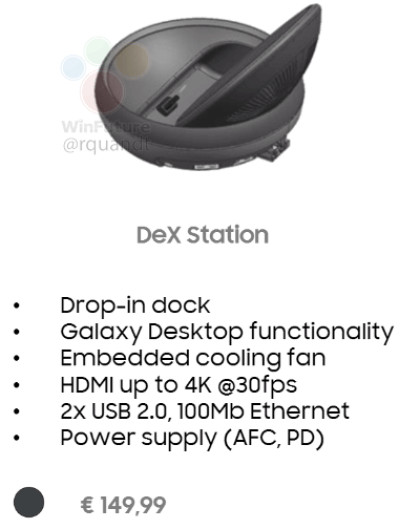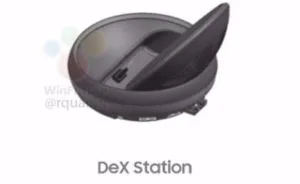It looks as though a German website, Winfuture, may have got an edge on information about the Samsung Galaxy, which is due to be officially launched on Wednesday 29th. The site apparently has press photos as well as a specification list. This adds to an interesting display story that it posted last week.
The S8, the site believes, will have two versions, the S8 and the S8 Plus, which will both have 2960 x 1440 (18.5:9) resolution and in 5.8″ and 6.2″ diagonals, with curved edges, like the S7 Edge and, of course, based on Samsung’s Super AMOLED technology. The longer displays will mean that almost the full front of the phone will be covered by the display surface. The cameras will be 12 megapixel/F1.7 on the back (which is the same headline specification as the S7) and with an 8 megapixel version for selfies.

The site claims that the phone will have an iris scanner for security and will be certified to IP68 for waterproofing.
The European version of the phone is expected to use a Samsung Exynos 8895 Octa-core AP (running at 1.7GHz and 2.5GHz) and has 4GB of memory and 64GB of flash memory (with expansion via a MicroSD). The battery is 3,000 mAh (as the Samsung S7) and the weight is 1gm less than the S7 at 151gms, compared to 152gms. The thickness is very close to the S7, up from 7.9mm to 8.0mm.
The phone, as expected, is said to have a USB Type-C connector and seems to support the output of high resolution graphics. Winfuture reported last week on a new ‘docking station’ for the S8, the DeX Station (Samsung Desktop Experience Station), which connects to the phone and charges it, while taking the data from the USB port and providing an HDMI output of up to 3840 x 2160 at 30fps.
 Samsung’s DeX Station is a dock that supports an external monitor. Image:Winfuture.com
Samsung’s DeX Station is a dock that supports an external monitor. Image:Winfuture.com
Interestingly, the docking station is said to have an active cooling system to keep the phone cool when it is running an external monitor. The dock has dual USB ports and an ethernet port and the site says that it will cost €149.99.
The site suggests that the dock will work with monitors supporting USB Power Delivery to mean a single cable from the monitor to the dock. However, I can’t remember seeing a monitor from Samsung with Type-C and power delivery, although there are a small number of other makers with that kind of product.
I have long believed that in the longer term, for many users, the intelligence in the system will be in their mobile phones. However, you can’t work for an extended period on a small display, so users will want to connect to a monitor, which, using Power Delivery and the DisplayPort ‘Alt’ mode (which feeds a graphics signal through a USB Type-C connector and which, we suspect may be supported in the DeX Station, being converted to HDMI in the dock).
It’s an attractive idea, but for monitor makers, there are challenges. The USB Interface forum told us at Mobile World that the ‘sweet spot’ for USB Power Delivery is to provide 60W of power to the device. That’s a challenge, as you also need some power for the monitor itself and then you hit a threshold for having to include power factor correction when power supplies are 75W or above. That means more expensive power supplies.
The other problem is that buyers tend to like monitors with integrated power supplies and having a big power supply in the back of the monitor can make cooling difficult. So, the monitor maker has to add quite a lot of cost, and probably not much less than the cost of an external dock.
The other area is that you need to look after is the interface. Android is not designed to be used with a keyboard and a mouse, so some kind of wrapper or new interface is needed to make the experience closer to that of a desktop PC. As we heard from Sentio (previously Andromium) at MWC recently, there’s a lot to be done. Sentio, for example, has done a lot of work to allow multiple applications to be open on the Android desktop.
Of course, Microsoft has the Continuum technology to support this application, but Windows-based smartphones have all but disappeared.
Anyway, be sure that once the S8 is officially released, we’ll be following up on these topics – if only to see if Winfuture was correct! – Bob

